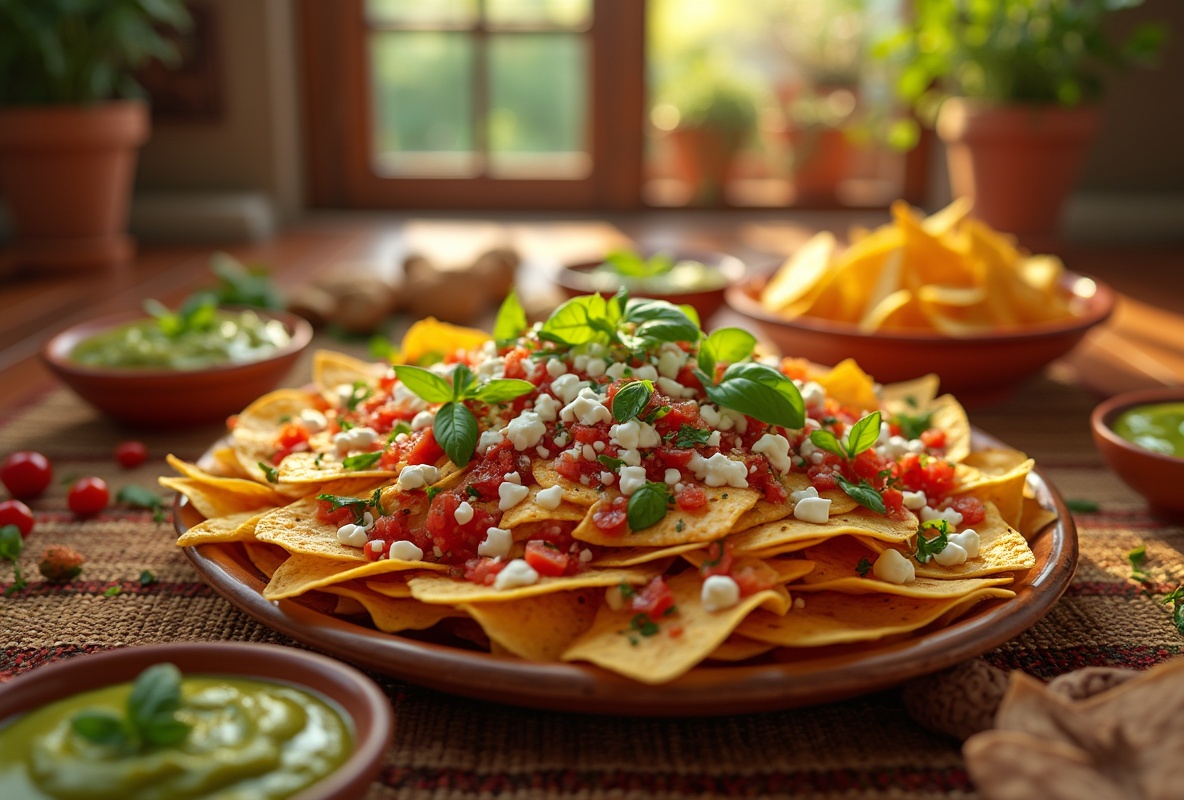The Birthplace of Nachos: A Culinary Tale
When I first heard the story of nachos, I was intrigued by how a simple dish could captivate taste buds worldwide. The origin of nachos explained the journey of a humble snack that began in a small Mexican town. Because of this serendipitous creation, a legend was born. Ignacio "Nacho" Anaya, a name that resonates with both history and flavor, crafted nachos to satisfy patrons with limited ingredients. This delightful appetizer, featuring crispy tortilla chips and melted cheese, soon transformed from a local favorite into a global culinary icon.
Unveiling the History: Origin of Nachos Explained
When I first heard about the origin of nachos explained, I was intrigued by the fascinating blend of chance and culinary innovation. Back in 1943, a small Mexican town named Piedras Negras witnessed the humble beginnings of this now-famous snack. An unexpected group of U.S. military wives arrived at the Victory Club, seeking a quick bite. With limited ingredients at hand, Ignacio Anaya, affectionately known as "Nacho," used crispy tortilla chips, melted cheese, and sliced jalapeños to craft a simple yet irresistible dish. Because of this inventive moment, the iconic nachos were born. Interestingly, the original recipe remains close to many hearts, but it has also spurred countless variations worldwide. Today, whether at a bustling stadium or a quiet movie night at home, nachos continue to captivate taste buds across the globe. If you're interested in learning about other creative culinary adaptations, check this Mexican sushi fusion cuisine explained.
Ignacio Anaya: The Man Behind the Magic
When discussing the origin of nachos explained, we're really diving into a tasty moment shaped by one creative individual. Let me paint you a picture: it's 1943 in Piedras Negras, a small town in Mexico, just across the border from Texas. One day, Ignacio "Nacho" Anaya found himself in a pinch. Hungry customers arrived at his restaurant, demanding a snack, but the kitchen was practically bare. With quick thinking and little more than tortillas, cheese, and jalapeños, he crafted what would become a culinary legend. Interestingly, Ignacio didn't imagine the global sensation he'd sparked that day. His innovation was born from necessity, and because of that, it was nothing short of ingenious. The simplicity of nachos made them accessible, yet their potential for creativity captivated taste buds everywhere. For those inspired to explore flavorful pairings, check out secrets to perfect nachos. Thanks to Ignacio's quick thinking and culinary skill, the humble nachos started their journey from a regional specialty to an international favorite, beloved by millions across different cultures.
From Local Delight to Global Sensation
The origin of nachos explained how this once simple dish of crispy tortilla chips and melted cheese began in a small Mexican border town. But it's fascinating how quickly it captivated taste buds far and wide. Originally, these nachos were a humble treat in Piedras Negras, Mexico. Because they were easy to make, they became an instant hit. As I learned more, it was remarkable to see how this savory snack crossed borders and entered kitchens worldwide. Chefs and home cooks alike started experimenting, adding toppings like jalapeños, salsa, and guacamole. This added layer of creativity and flavor transformed nachos from a quick appetizer into a culinary staple at parties and sporting events. Nowadays, you’ll find various versions, from gourmet interpretations to vegan options, reflecting diverse cultural influences and dietary preferences. If you're curious about plant-based adaptations, explore the possibilities with vegan cheese ingredients. It’s amazing to think that something that started on a small scale became such a widespread phenomenon, and there's more to explore.
The Evolution of Nachos: Variations Across Cultures
When we delve into the "Origin of Nachos Explained," we uncover a rich tapestry of cultural adaptations that have transformed this humble snack into a global phenomenon. Originally a simple dish of tortilla chips, cheese, and jalapeños, nachos have evolved significantly. In Mexico, where nachos began, traditional toppings like jalapeños are still preferred. However, as nachos crossed borders, they underwent fascinating changes. For instance, American versions often feature ground beef, sour cream, and guacamole, creating a hearty contrast to their Mexican counterparts. Meanwhile, in Asian fusion cuisines, innovative chefs have added spicy tuna or kimchi, blending flavors in unexpected ways. These inventive twists not only reflect the snack's adaptability but also its universal appeal. Moreover, nachos have found a home in vegan diets, with plant-based cheeses and toppings enhancing their inclusivity. To further explore flavorful cheese substitutes for nachos, visit cheese alternatives for mac & cheese. This aspect of the dish opens up a world of culinary possibilities worth exploring further.
How Nachos Became a Game Day Favorite
The origin of nachos explained a surprising journey from a simple appetizer to a game day essential. Initially, nachos were just a quick snack created by Ignacio Anaya for hungry patrons. However, their rise to fame, particularly among sports fans, is fascinating. Stadiums started selling nachos in the 1970s, realizing their potential as a convenient and delicious snack. With the addition of gooey cheese and spicy jalapeños, nachos soon became synonymous with high-energy games. Thanks to their versatile toppings and flavors, they appeal to diverse tastes, making them a staple at sporting events. Fans love the combination of crunchy tortilla chips and warm melted cheese, a perfect snack for cheering on their teams. For an exciting twist, consider experimenting with popular pizza toppings in India to incorporate international flavors into nachos. Therefore, it's no surprise that nachos are now a worldwide favorite, transcending cultures and regions. This perspective broadens our understanding and sets the stage for even more exciting insights.
Exploring the Future of This Beloved Snack
As we look into the future of nachos, it's clear that innovation will continue to shape their journey. Chefs and home cooks alike are exploring fresh ingredients and bold flavors, merging tradition with modern creativity. Imagine baked nachos topped with exotic cheeses or garnished with spicy international sauces. The versatility of nachos offers endless possibilities, and they have become a blank canvas for creativity. Meanwhile, healthier alternatives like using sweet potato or kale chips are gaining popularity, catering to those who prefer nutritious options. As the culinary world evolves, there's no doubt that the origin of nachos—and their inventive twists—will keep inspiring food enthusiasts globally. Take inspiration from creative recipes like one-pan lemon garlic chicken and asparagus to use seasonal pairings with nachos. With these ideas, the possibilities for innovation are truly endless.
Frequently Asked Questions
How can I prepare nachos ahead of time?
To prepare nachos in advance, assemble the ingredients without cooking. Layer chips, cheese, and toppings in a baking dish. Cover and store in the refrigerator. When ready, bake as directed. This way, you enjoy fresh nachos with minimal effort.
What common challenges might arise when making nachos?
A common challenge is soggy chips. To avoid this, add hot toppings right before serving. Ensure cheese is evenly distributed and melted to prevent a heavy, uneven layer that might make chips soggy.
Can I adapt nachos for different dietary preferences?
Yes, nachos are adaptable! For a vegetarian option, use beans instead of meat. Vegan? Try plant-based cheese and meat substitutes. Gluten-free? Choose corn-based chips. Experiment with toppings for a customized dish.
How should I store nacho leftovers?
Store leftover nachos in an airtight container in the fridge for up to two days. Reheat in the oven to keep the chips crispy. Avoid microwaving as it can turn them soggy and chewy.
What are the best pairings for nachos?
Nachos pair wonderfully with fresh salsa, guacamole, or a zesty lime margarita. For a meal, serve with a crisp salad or a bowl of chili. These options complement the flavors, making for a delightful dining experience.

